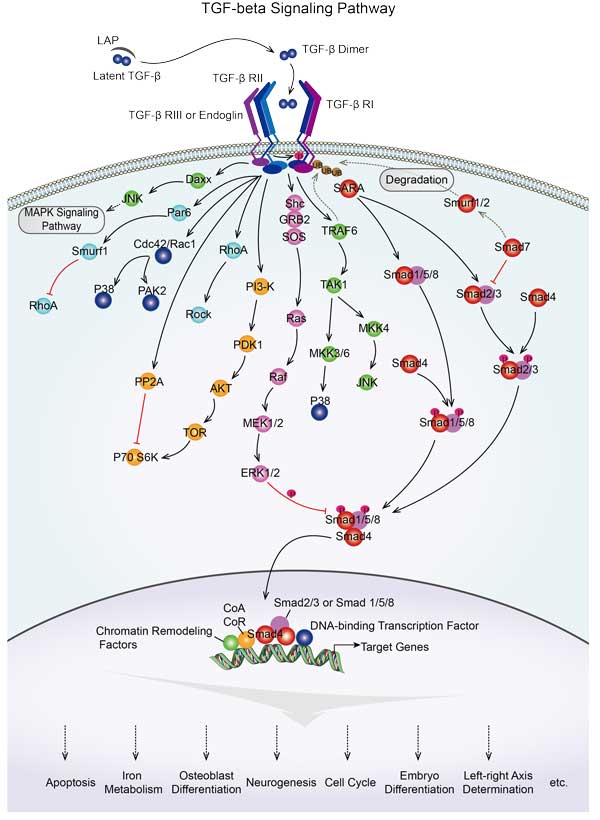TGFB2
-
Official Full Name
transforming growth factor, beta 2 -
Overview
Transforming growth factor betas (TGF betas) mediate many cell-cell interactions that occur during embryonic development. Three TGFbs have been identified in mammals. TGF beta1, TGF beta2 and TGF beta3 are each synthesized as precursor proteins that are very similar in that each is cleaved to yield a 112 amino acid polypeptide that remains associated with the latent portion of the molecule. This antibody reacts with the precursor and mature form of TGF beta2 and to a lesser extent TGF beta3, but does not cross react with TGF beta1. -
Synonyms
TGFB2;transforming growth factor, beta 2;transforming growth factor beta-2;G-TSF;cetermin;polyergin;BSC-1 cell growth inhibitor;glioblastoma-derived T-cell suppressor factor;TGF-beta2;MGC116892;LDS4
Recombinant Proteins
- Human
- Mouse
- Canine
- Cattle
- Rat
- Chicken
- Rhesus macaque
- Zebrafish
- Bovine
- HEK293
- CHO
- Nicotiana Benthamiana
- E.coli
- Human
- Hi-5 Insect Cells
- C-Avi
- Mammalian Cells
- Human Cells
- Yeast
- Avi
- Fc
- His
- Non
- Flag
- DDK
- Myc
Background

Fig1. Overview of currently known TGFB2 mutations. (Marco Ritelli, 2014)
What is TGFB2 protein?
TGFB2 (transforming growth factor beta 2) gene is a protein coding gene which situated on the long arm of chromosome 1 at locus 1q41. Transforming growth factor betas (TGF betas) mediate many cell-cell interactions that occur during embryonic development. Three TGFbs have been identified in mammals. TGF beta1, TGF beta2 and TGF beta3 are each synthesized as precursor proteins that are very similar in that each is cleaved to yield a 112 amino acid polypeptide that remains associated with the latent portion of the molecule. The TGFB2 protein is consisted of 414 amino acids and its molecular mass is approximately 47.7 kDa.
What is the function of TGFB2 protein?
TGFB2(Transforming Growth Factor-β2) is a multifunctional cytokine belonging to the TGF-β superfamily. It is mainly involved in the regulation of cell proliferation, differentiation, migration and apoptosis. TGFB2 plays an important role in embryonic development, tissue repair, immune regulation, and disease occurrence and progression. By binding to specific receptors, TGFB2 activates the SMAD signaling pathway, which in turn affects gene expression and cell behavior.
TGFB2 Related Signaling Pathway
TGF-β signaling pathway: TGFB2 is a member of the TGF-β family and participates in the TGF-β signaling pathway. TGF-β receptor regulates cell proliferation, differentiation, apoptosis and other biological functions by activating Smad protein.
MAPK/ERK signaling pathway: TGFB2 can also regulate biological processes such as cell growth, differentiation, and transcription by activating the MAPK/ERK signaling pathway.
PI3K/AKT signaling pathway: TGFB2 may also participate in the PI3K/AKT signaling pathway, regulating biological functions such as cell survival, proliferation and cycle.
TGFB2 Related Diseases
Mutations or defects in the TGFB2 gene may lead to the development of some genetic diseases, such as Marfan syndrome. TGFB2 is closely related to the occurrence and development of various tumors such as breast cancer, gastric cancer and ovarian cancer. In some cases, TGFB2 can promote or inhibit tumor growth and metastasis. TGFB2 protein is also involved in the control of inflammatory response and immune disease. TGFB2 plays an important role in embryonic development, and abnormal TGFB2 signal may lead to fetal development defects, such as mouth cleft and heart malformation.
Bioapplications of TGFB2
TGFB2 can promote wound healing and tissue repair, so it has potential applications in the field of trauma medicine and tissue repair. TGFB2 can be used as a biomarker for certain diseases for diagnosis and disease surveillance. TGFβ inhibitors are being investigated for cancer treatment.
Case Study
Case study 1: Xiao-Ming Jiang, 2021
Osimertinib (AZD9291) has been widely used for the treatment of EGFR mutant non-small cell lung cancer. However, resistance to osimertinib is inevitable. In this study the researchers elucidated the molecular mechanisms of resistance in osimertinib-resistant NCI-H1975/OSIR cells. In NCI-H1975 cells, osimertinib activated NF-κB pathway, evidenced by the increased p65 nuclear translocation, which was abolished by knockdown of TGFβ2. In the cancer genome atlas lung adenocarcinoma data, TGFB2 transcript abundance significantly correlated with EMT-associated genes and NF-κB pathway. These findings shed new light on distinct roles of TGFβ2 in osimertinib-resistant cells and provide new strategies for treatment of this resistant status.
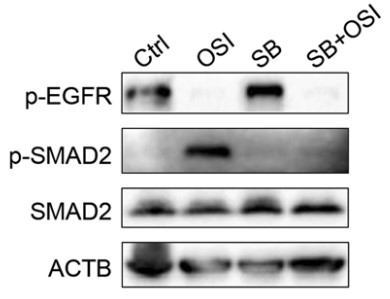
Fig1. The indicated protein levels were determined by Western blotting after cotreatment with the TGFβRI inhibitor SB525334 (SB, 1 μM) and OSI (125 nM) for 48 h.
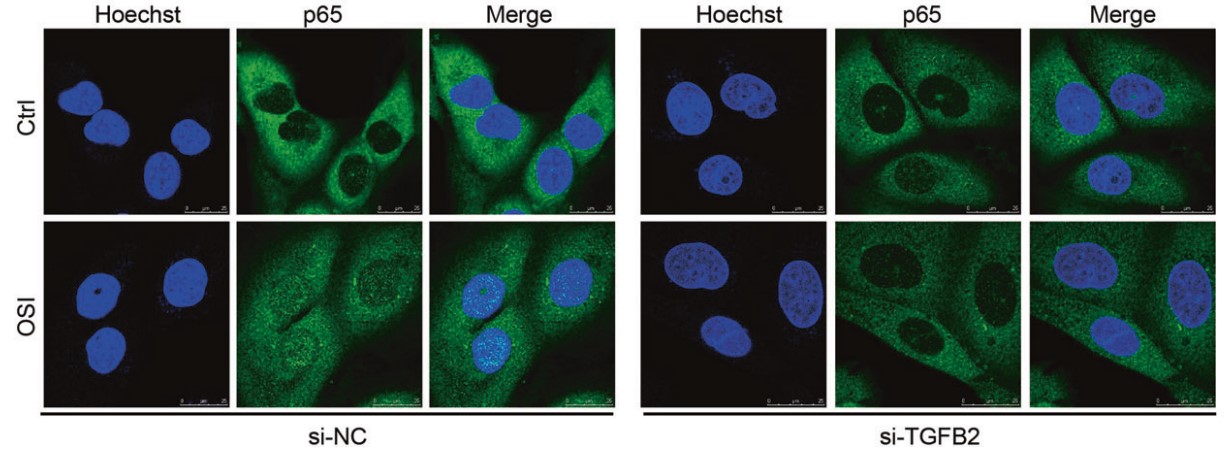
Case study 2: Jinliang Wu, 2017
The metabolic reprogramming is indispensible for the fast growth of tumor cells. The metabolism of CAFs is reprogrammed to aerobic glycolysis too. However, it is not clear whether this metabolic reprogramming promotes the growth of CAFs themselves.
The researchers found TGF-β signaling regulated cell growth of CAF through RNA-sequencing analysis and Western blot, which was further supported by the observation that TGF-β2 was highly expressed in colon cancer tissues. In brief, the data have manifested that the proliferation rate is decreased in CAFs, which enable CAFs generate more intermediate metabolites to support tumor cells growth, suggesting CAFs is an ideal target for tumor therapy.
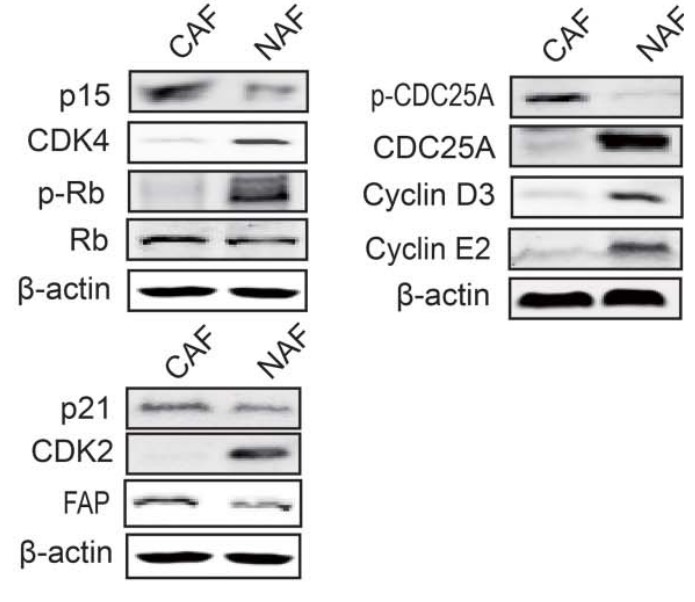
Fig3. Verification of the possible pathway regulating G1/S checkpoint.
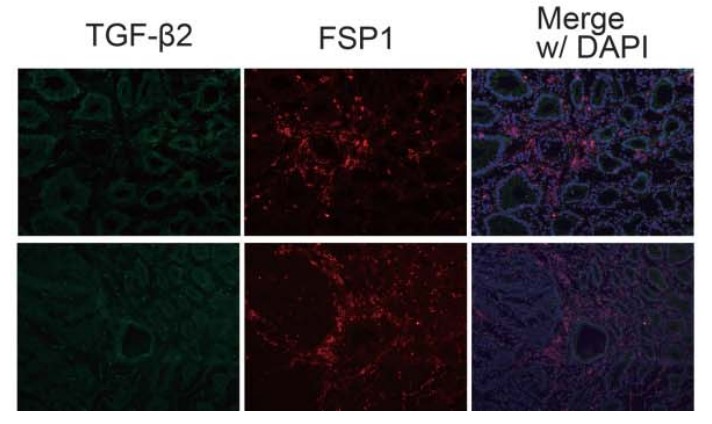
Quality Guarantee
High Purity
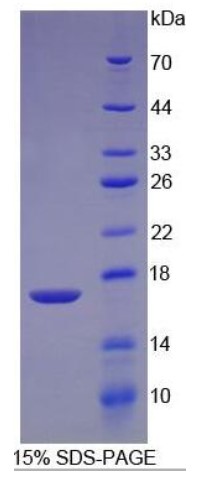
Fig1. SDS-PAGE (TGFB2-228H) (PROTOCOL for western blot)
.
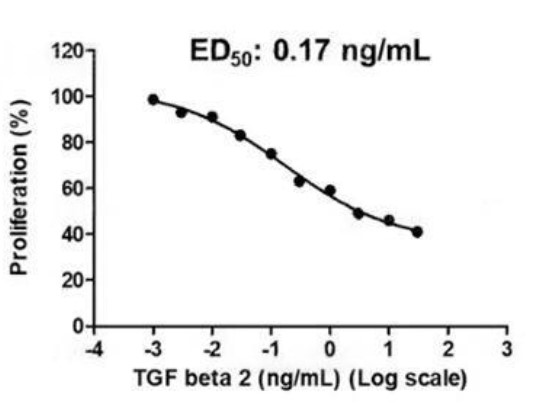
Fig2. Activity Data. (TGFB2-287H)
Involved Pathway
TGFB2 involved in several pathways and played different roles in them. We selected most pathways TGFB2 participated on our site, such as MAPK signaling pathway,Cytokine-cytokine receptor interaction,FoxO signaling pathway, which may be useful for your reference. Also, other proteins which involved in the same pathway with TGFB2 were listed below. Creative BioMart supplied nearly all the proteins listed, you can search them on our site.
| Pathway Name | Pathway Related Protein |
|---|---|
| Inflammatory bowel disease (IBD) | IL23R,HLA-DRB5,IL4R,GATA3,IL18,IL17F,HLA-DRB4,NFKB1,IL4,IL12RB2 |
| Cell cycle | MIS18A,MIS12,MYC,EP300,VRK1,NEDD1,CDKN2A,CDK5RAP2,ANAPC7,CDC6 |
| Chronic myeloid leukemia | AKT1,TGFBR2,BCL2L1,CRK,PIK3CD,CBLC,SHC4,BAD,STAT5A,ARAF |
| HTLV-I infection | TNF,NFKB2,WNT9A,CRTC1,RRAS2,PDGFRA,EGR1,AKT1,FZD6,WNT6 |
| TGF-beta signaling pathway | GDF6,TGFB3,PPP2R1A,TFDP1A,THBS1,FST,ACVR2AA,TGFBR1A,INHBC,RHOAD |
| Toxoplasmosis | GNAI2,ALOX5,MAPK1,MAPK12,ITGA6,BCL2,MAP2K6,HLA-DRB5,MAPK8,Toxoplasma Gondii Major Surface Antigen P30 |
| Dilated cardiomyopathy | CACNG8,ITGAV,ITGA7,Itga10&Itgb1,ITGA1,CACNB4,SGCG,ITGA6,PLN,DES |
| Hypertrophic cardiomyopathy (HCM) | CACNG7,LMNA,DAG1,CACNG6,ITGB4,CACNB3,PRKAG2,ITGAV,ITGA1,MYH7 |
| Renal cell carcinoma | ARNT2,TCEB2,MAPK1,CUL2,AKT2,ETS1,VHL,PIK3R3,PAK1,RAC1 |
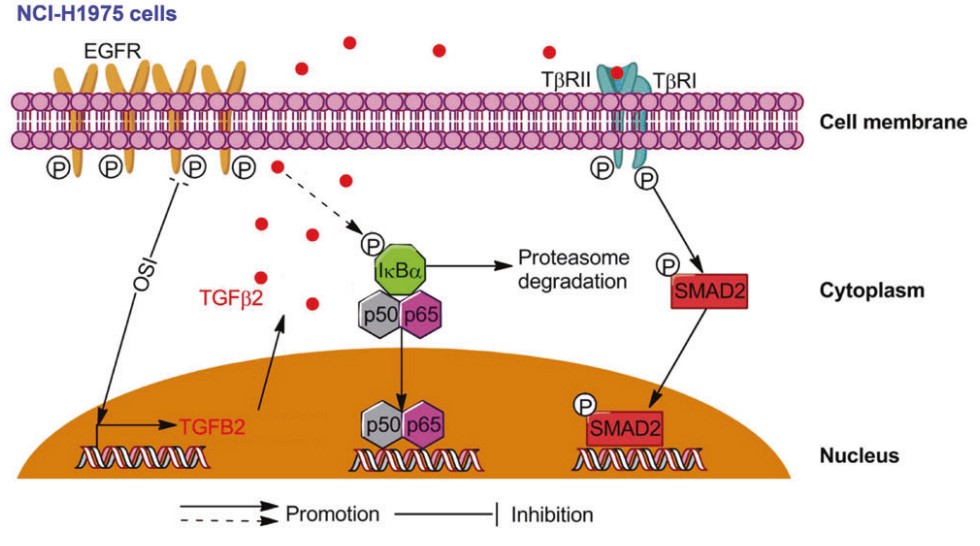
Fig1. Schematic representation of the proposed mechanisms of OSI resistance in NCI-H1975 cells. OSI-induced TGFβ2-mediated activation of NF-κB and SMAD2. (Xiao-Ming Jiang, 2021)
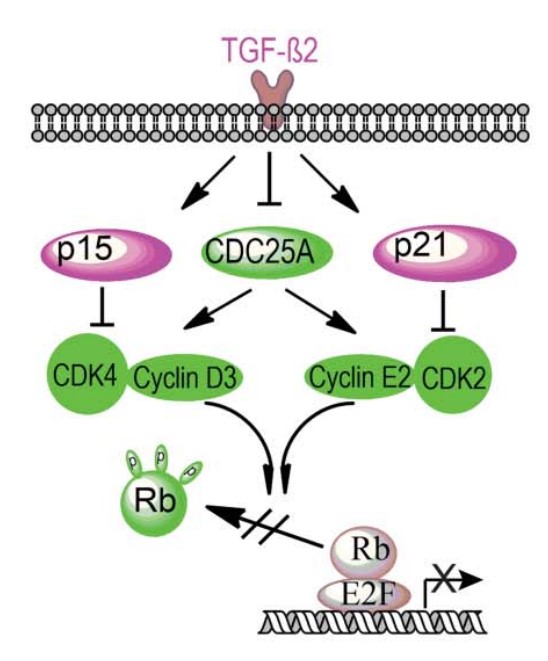
Fig2. TGF-β signaling regulates G1/S checkpoint in CAFs. (Jinliang Wu, 2017)
Protein Function
TGFB2 has several biochemical functions, for example, beta-amyloid binding,cytokine activity,growth factor activity. Some of the functions are cooperated with other proteins, some of the functions could acted by TGFB2 itself. We selected most functions TGFB2 had, and list some proteins which have the same functions with TGFB2. You can find most of the proteins on our site.
| Function | Related Protein |
|---|---|
| cytokine activity | BMP7A,TNFSF9,IL17A/F2,IFNA1,IL20,IL17A,BMP8A,GPI,BMP6,THPO |
| protein homodimerization activity | CARD8,BLOC1S6,COQ9,SEPT12,CRYBA1,NRBP1,BCL2A,TERF2,LRRK2,TPD52L2 |
| type III transforming growth factor beta receptor binding | TGFBR2,TGFB3,TGFB1 |
| receptor signaling protein serine/threonine kinase activity | STK25B,STK24B,PANK1A,ACVR2A,OXSR1A,TGFBR1,ACVRL1,AMHR2,STK39,ACVR1L |
| type II transforming growth factor beta receptor binding | BAMBI,ENG,TGFB1A,TGFB1,TGFB3,TGFBR1,TGFBR3 |
| protein binding | ZBTB4,KRTAP23-1,LSM4,AKAP13,SHFM1,SIX1,UNC13D,CYTIP,REEP6,AP3M1 |
| receptor binding | SCYL2,CTNND1,PEX14,PVRL1B,GNB2L1,DHRS4,RASA1,WIPI1,HAMP,ABL2 |
| protein heterodimerization activity | NR2C2,SOX17,PBX1,SOX6,SLC51B,MAFG,SOX32,TAP1,ODZ4,UBXN6 |
| growth factor activity | TGFB3,NTF7,GH1,GDF3,FGF18,FGF12,IL34,OGN,NDP,HBEGFB |
Interacting Protein
TGFB2 has direct interactions with proteins and molecules. Those interactions were detected by several methods such as yeast two hybrid, co-IP, pull-down and so on. We selected proteins and molecules interacted with TGFB2 here. Most of them are supplied by our site. Hope this information will be useful for your research of TGFB2.
APP;BMP2
TGFB2 Related Signal Pathway
Resources
Gene Families
Research Area
Related Services
Related Products
References
- Niarami, MD; Masoudi, AA; et al. ASSOCIATION OF SINGLE NUCLEOTIDE POLYMORPHISM OF GHSR AND TGFB2 GENES WITH GROWTH AND BODY COMPOSITION TRAITS IN SIRE AND DAM LINES OF A BROILER CHICKEN. ANIMAL BIOTECHNOLOGY 25:13-22(2014).
- Liu, NM; Yokota, T; et al. Transcription Profiles of Endothelial Cells in the Rat Ductus Arteriosus during a Perinatal Period. PLOS ONE 8:-(2013).


